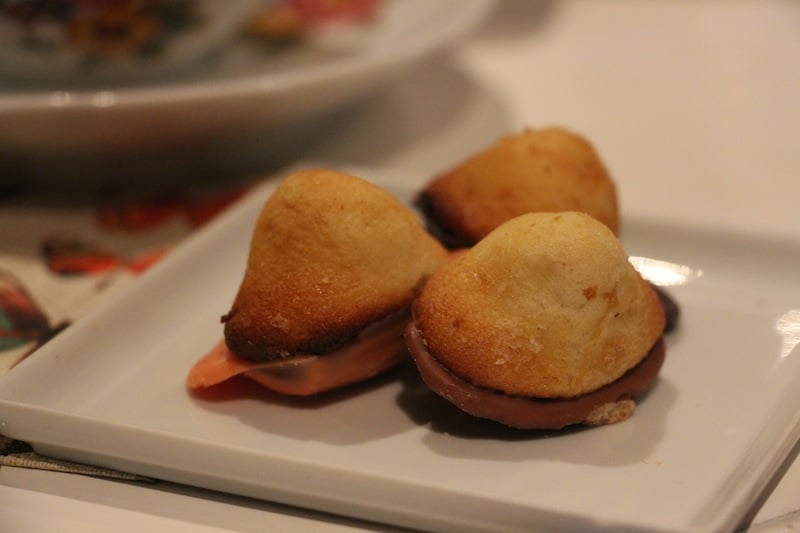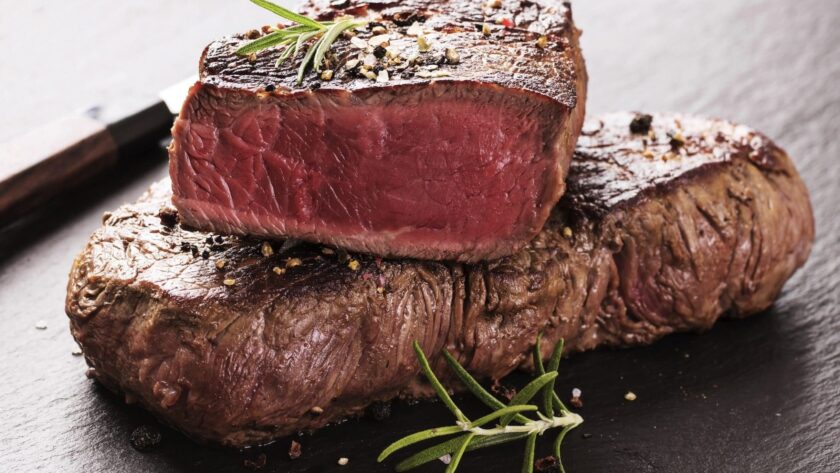
I’ve got a handful of pet causes — I guess you could call them obsessions.
And one of the most important, to me, is sharing the wonderful variety that is French regional cuisine.
So many people arrive in my home city of Paris assuming that what they think of as “French” cuisine will be everywhere, and while the capital is an epicenter of foodie culture, there’s so much richness throughout the country that it’s a shame to miss.
With that in mind, let’s take a journey to Limoges, in the heart of the Limousin region, to discover these little known regional delicacies.
Pro tip:
Before visiting France, make sure you understand French dining etiquette so you can eat out like a local.
1. Lean & Juicy Limousin Steak

One of the reasons I love exploring regional food so much is because it allows you to get a glimpse of local culture.
Take the famous Limousin steak, for example.
No matter where you go in Limoges, you’ll find Limousin steak on the menu — one of several breeds of cattle raised in France almost exclusively for meat production.
Limousin cattle are highly muscled and were previously used as draft animals; Limousin beef only became popular about 200 years ago, but it’s more than made up for lost time.
In fact, the butchers of Limoges have long been some of the most important of its citizens, with their own saint, their own local festivals — even the key to the city!
There is a street in Limoges called rue de la Boucherie, which was historically the center of this trade. While few butchers still work there today, you should definitely take the time to get to know their products.
Limousin beef tends to be leaner than most, but it’s still tender and full of flavor.
Locally, the beef is used in many different recipes, often cooked with other ingredients. If you want to see why this one stands out from the rest, a traditional steak au vin rouge or steak with red wine sauce is a delicious choice.
2. Rich, Savory Limousin Grillons

But lest you think that beef is the only meat you’ll find in Limoges, turn your attention to the myriad pork products made in the region.
While different charcuteries can be found throughout France, grillons are a local specialty.
Grillons can actually be found throughout this Southwestern region of France, in Charentes and Dordogne as well. If you’ve ever tried rillettes, a sort of spreadable pâté, you may find grillons familiar.
Both products are made of shredded meat held together with fat, which can be pork, duck or goose.
The difference with grillons is in the size of the meat pieces as well as in the seasoning. Strongly flavored with garlic and herbs, this product boasts large pieces of pork with lots of texture. It’s flavorful and spectacularly rich, so you won’t need much to get the full effect.
3. Hearty Boudin Noir With A Local Flair

Not for the weak-hearted (or stomached), boudin enters into a long and fruitful tradition of offal in French butchery and charcuterie.
This tradition is fading with some of the younger generations, but local shops like Tripes et Cie (15 Rue Haute Vienne) are trying — and succeeding — at bringing it back, with stores that sell offal in easy-to-eat portions for a takeaway lunch or an inexpensive but gourmet canapé for a party.
Boudin noir is one such meat, similar to British black pudding or blood pudding — essentially sausages made from pig fat.
Before you turn up your nose, understand this richly flavored delicacy is a favorite in many different French regions.
What makes the boudin noir in the Limousin so intriguing is the inclusion of local chestnuts, which add a nutty sweetness to the already richly flavored sausage.
Boudin noir is traditionally served with deux pommes — two apples, a play on the similarity between the word for apple, pomme, and potato, pomme de terre or, literally, apple of the earth.
The apples are sautéed in butter alongside the sausages, while the potatoes are generally whipped up into a purée.
They make the perfect pair for the nutty boudin.
4. Farmstyle Goat Cheese

Considering Limoges’ rich butchery tradition and all the meat products on offer, one would assume that dairy would be fairly widespread as well.
After all, where there are cows, there’s milk, right?
Not exactly.
The Limousin is actually one of the only regions in France that does not boast an AOC cheese, as most of the cattle in the region are devoted exclusively to beef.
That being said, it does have a few local farm cheeses, most of which are goat’s cheeses, like bi-caillou, briquette de Ventadour, feuille du Limousin and gour noir.
Gour noir is a flavorful cheese produced in the Corrèze department, named for the black rock or gour noir mountains in the region. Gour noir is coated in black ash, mimicking the color of the rock, and is matured for up to 6 weeks, which gives it a light yet flavorful aroma of local grass.
5. Mini Madeleines

After all that savory, you may have your eye on something sweet.
Not to worry:
Limoges has its very own pastry tradition with the madeleine bébé or baby madeleine.
These diminutive cakes in the Proustian tradition are made just outside Limoges (Rue des Lauriers, 87800 Saint Maurice Les Brousses) and have the added benefit of being dipped in one of a variety of chocolates: dark, milk, white or orange.
I was lucky enough to sample them at the L Salon de Thé in Limoges (9, rue Cruche d’or), where they are the perfect accompaniment to a cup of artisanal tea.
By Emily Monaco
Also Check Out:
Wanderlust-Inducing Travel Photography
Earth Lodge: A Soul-Finding Farmstay In The Mountains Of Guatemala
Hold The Pork: Vegetarian-Friendly Finds In Portugal’s Land Of Meat And Fish
Emily Monaco
Latest posts by Emily Monaco (see all)
- Top 10 Prague Pastries To Try On Your Next Czech Republic Trip - Dec 20, 2023
- Unusual Budapest: Childhood Memories & Sweet Treasures At The Marzipan Museum - Sep 8, 2016
- How The Tomato Transformed The European Diet - Jan 9, 2016
- Is Himitsu The Secret To Atlanta’s Burgeoning Cocktail Scene? - Dec 28, 2015
- The French Influence On Vietnamese Cuisine - Dec 16, 2015





All of these look very delicious! One of the greatest way to discover and experience new cultures is the food, I see you have had a tasty pleasure in Limoges!
Great post! Thank you for sharing your culinary adventures.